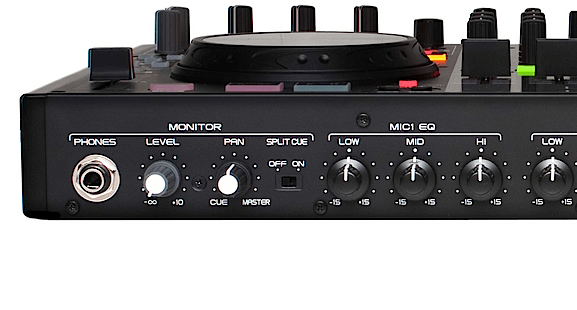There are two types of Cueing when your DJing, Split Cue and Stereo Cuing.
Stereo Cuing is the standard these days as most controllers have this as the only option. The following controllers still have Split Cue available (2017):
- Numark NS6
- 4Trak
- NS7II
- Denon MC6000 Mk I & Mk II
- Allen & Heath Xone DX
Unfortunately it’s fallen out of favour as it’s easier to mix using stereo that to us Split Cue.
The difference with stereo cue is that both the Main Output mix and the Cue Channel are both mixed in both headphones (left and right) at the same time.
This makes it easier for beginners as your brain doesnt need to distinguish between both sides and match them up using your brain (basically), you can DJ with one headphone (or the old school mono-headphones).
I prefer Slit-Cue for a few reasons:
- You don’t need a foldback speaker
- You can mix silently to practice
- It’s more accurate
- You can Cue and DJ at a lower volume (save your hearing!) since you don’t need to distinguish between stereo feeds
Reasons not to Split Cue:
- Takes extra practice
- About 10-20% of people just can’t mix in split-cue, their brain is just not wired in a way that the left and right hemispheres of their brain to sync the music together
- your controller doesnt have the functionality to do so
I always recommend that EVERYONE learns how to mono-split, once you can do it I find most people never go back again.
Unfortunately it costs a few dollars more to add a split cue function to mixers and so you will need to find a work around or software fix to get split cue working on your controller or low end mixing desk.
I’m eternally frustrated by Pioneer that they only offer Stereo Cue on their controllers, which are generally brilliant in every other way, which is why I’m still using their DJM900 Nexus mixer, I would recommend that if you’re starting out then you should try and get a mixer/controller with split cue too. It will make you a better DJ, save your hearing AND give you more control over your mixing if you’re not afraid to put some extra practice hours in!

